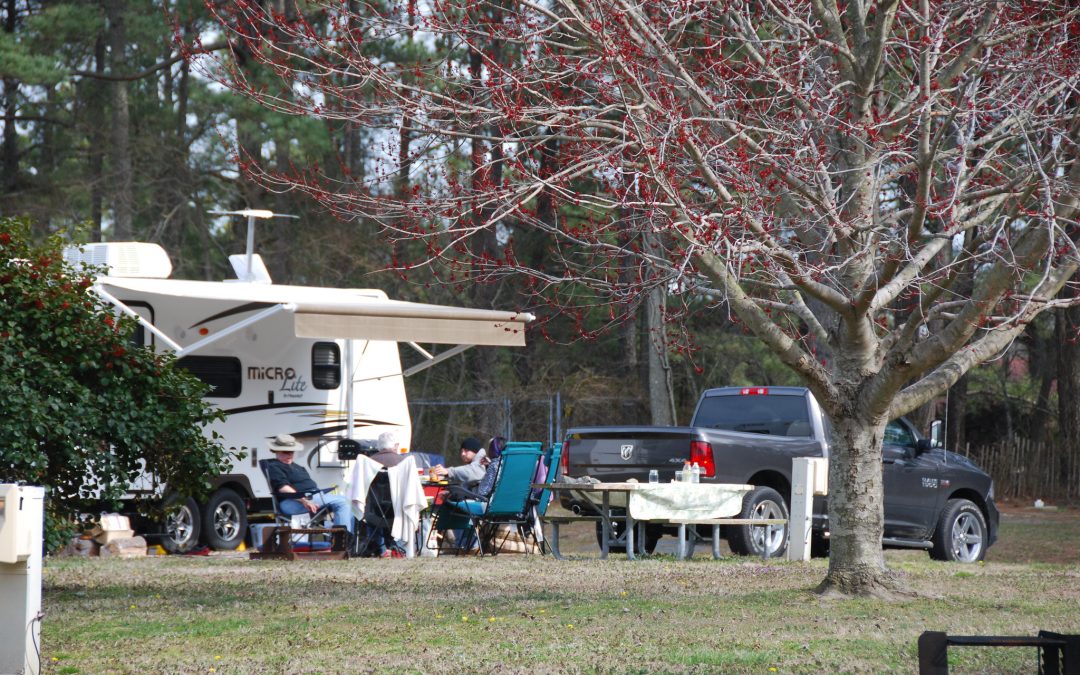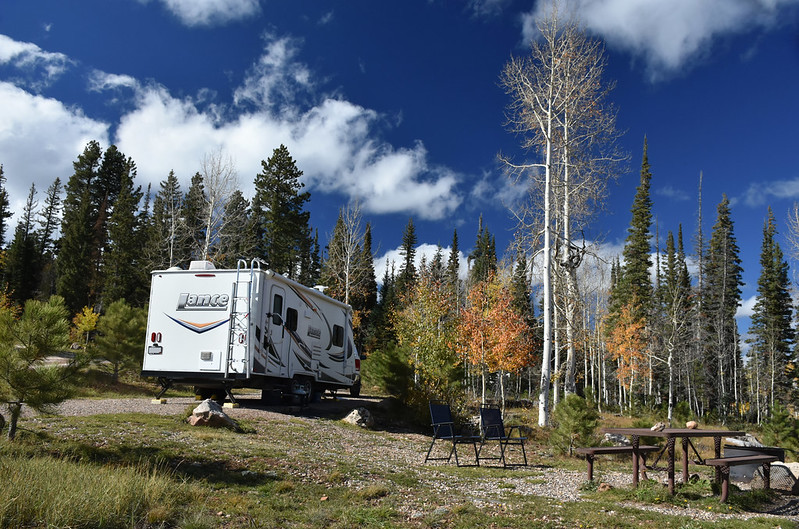The open road beckons, and the allure of RV camping has never been stronger. More and more people are discovering the freedom and flexibility of exploring the outdoors in a self-contained mobile home. This trend coincides with the rise of boondocking, the practice of camping off-the-grid in public lands, which offers a chance to truly immerse yourself in nature.
However, with increased RV camping comes a responsibility to tread lightly. Sustainable practices and a commitment to Leave No Trace principles are essential to ensure that future generations can enjoy these pristine environments.
This comprehensive guide aims to equip you, the RV adventurer, with the knowledge and skills to navigate the world of campsite setup, breakdown, and responsible camping. We’ll guide you through efficient practices for setting up your RV campsite, minimizing your environmental impact, and leaving the outdoors as you found them – or even better! Our goal is to empower you to enjoy the beauty of nature while ensuring its continued health for years to come.

Preparing for Your RV Adventure
Choosing the Right Campsite
The foundation of a fantastic RV adventure lies in selecting the perfect campsite. Here are some key factors to consider:
- Location: Do you crave breathtaking scenery, proximity to hiking trails, or the convenience of nearby amenities? Consider your priorities and research campsites that align with your vision.
- Accessibility: Can your RV comfortably navigate the access road? Is the site large enough to accommodate your RV and additional vehicles? Think about your RV’s size and turning radius when evaluating accessibility.
- Amenities: Do you require full hookups (water, sewer, electricity) or are you comfortable with dry camping (no hookups)? Consider the amenities offered by different campsites and choose based on your needs and preferences.
- Environmental Impact: Opt for established campsites whenever possible to minimize disruption to natural habitats. If boondocking, choose dispersed camping areas designated for RV use. Be mindful of fire restrictions and leave no trace principles.
Boondocking vs. Traditional Campsites
Now that you understand the campsite selection factors, let’s explore the two main camping styles:
- Boondocking: Embrace the spirit of self-reliance and immerse yourself in nature by boondocking on public lands.
- Pros: Seclusion, tranquility, and often, free camping!
- Cons: Limited or no amenities, potential challenges with finding level ground, and following stricter waste disposal regulations.
- Traditional Campsites: Enjoy the convenience of established campgrounds with amenities like hookups, restrooms, and sometimes even laundry facilities.
- Pros: Convenience, access to amenities, often have designated RV spots, and sometimes offer organized activities.
- Cons: Can be crowded and noisy, fees associated with camping, and may have restrictions on fire use or generator use.
Deciding Between Boondocking and Campsites:
The best choice depends on your preferences and RV setup. If you prioritize solitude and self-sufficiency, and your RV is equipped for dry camping, then boondocking might be ideal. However, if you value amenities and a more structured camping experience, a traditional campsite may be the better option.
Essential RV Camping Gear
Preparation is key to a smooth RV camping experience. Here’s a comprehensive checklist to get you started, with a focus on eco-friendly alternatives:
- Basic RV Equipment: Leveling blocks, wheel chocks, extension cords, hoses, electrical adapters, surge protector.
- Eco-Friendly Options: Solar panels or a portable wind turbine for alternative power, reusable water containers, biodegradable dish soap, camp chairs made from recycled materials.
- Lightweight and Multi-Use Gear: Opt for compact, multifunctional items to minimize space usage. Folding camp tables and chairs, a spork instead of separate utensils, and a camp blanket that doubles as a picnic blanket are all space-saving choices.
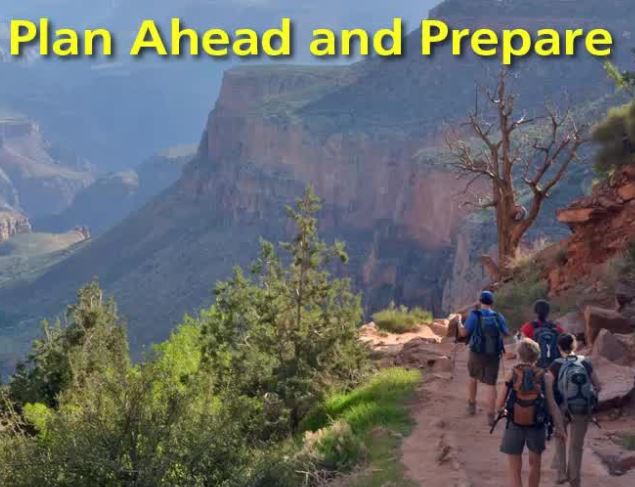
Understanding Leave No Trace Principles
Leave No Trace (LNT) is a set of seven principles designed to minimize human impact on the outdoors. Here’s how these principles translate to responsible RV camping:
- Plan Ahead and Prepare: Choose established campsites whenever possible, research campfire restrictions, and pack out all trash, including greywater.
- Travel and Camp on Durable Surfaces: Park your RV on designated campsites or established roads to avoid damaging vegetation.
- Dispose of Waste Properly: Utilize designated dump stations for RV waste and properly dispose of trash in bear-proof containers.
- Leave What You Find: Respect natural and cultural resources. Leave rocks, plants, and historical artifacts undisturbed.
- Minimize Campfire Impacts: Only use designated fire rings and extinguish fires completely before leaving your campsite.
- Respect Wildlife: Store food properly to avoid attracting animals. Never approach or feed wildlife.
- Be Considerate of Other Visitors: Respect the privacy of fellow campers and maintain a reasonable noise level.
Real-World Applications of LNT
By following LNT principles, you can significantly reduce your environmental impact. Here are some real-world examples:
- Reduce Waste: Plan meals to minimize food waste, use reusable dishware, and recycle or compost whenever possible.
- Wildlife Protection: Store food in airtight containers inside your RV and never leave unattended food scraps outdoors.
- Minimize Campfire Impact: Only use existing fire rings, gather firewood responsibly from designated areas, and extinguish your campfire with water until cool to the touch.
By adopting these practices, you’ll ensure that future generations can enjoy the beauty of the outdoors just as you do.
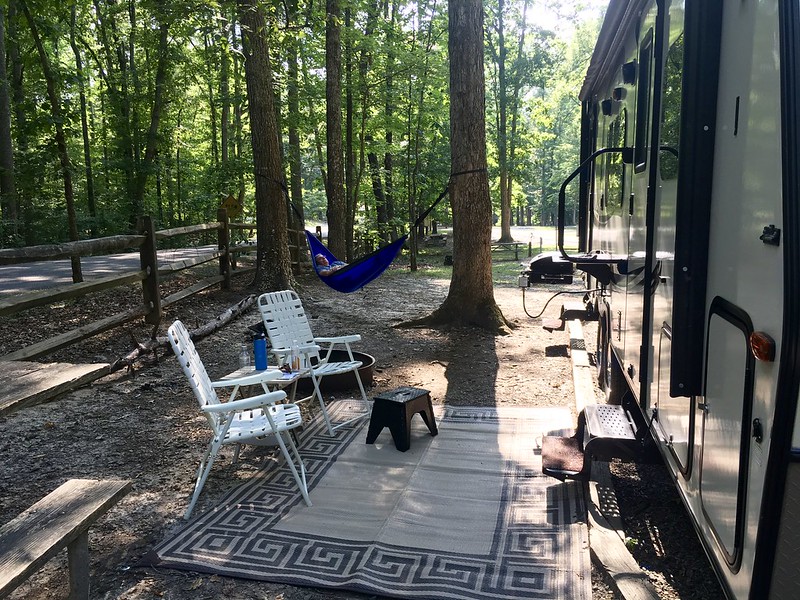
RV Campsite Setup
Arrival and Assessment
Congratulations! You’ve reached your chosen campsite. Before diving into setup, take a moment to assess the area:
- Identify Hazards: Look for overhead power lines, low-hanging branches, or uneven terrain that could pose risks.
- Assess the Terrain: Is the ground level or slightly sloped? Identifying the slope is crucial for proper leveling.
- Respect Boundaries: Familiarize yourself with campsite boundaries and park your RV within designated areas.
Positioning Your RV
Now it’s time to position your RV for a comfortable and safe stay. Here’s how:
- Leveling: Use leveling blocks and jacks to ensure your RV sits level. A slightly off-level RV can cause drainage issues and discomfort.
- Orienting: Consider the sun’s position. Park your RV with the awning facing away from the afternoon sun for optimal shade.
- Stabilizing: Deploy wheel chocks on both sides of each drive wheel to prevent your RV from rolling.
Establishing Camp: An Eco-Friendly Approach
With your RV positioned, it’s time to create your campsite haven. Here’s a step-by-step guide with a focus on sustainability:
- Unroll Awning (Optional): If using an awning, extend it carefully, considering wind conditions. Opt for a solar-powered awning light for a touch of eco-friendly ambiance.
- Set Up Furniture: Unfold your lightweight camp chairs and table, prioritizing items made from recycled materials.
- Unroll Flooring: Consider using a recycled plastic camping mat under your furniture to protect the ground and minimize dirt tracked into your RV.
- Connect Utilities (Optional): If your campsite offers hookups, connect your water hose, sewer hose, and electrical cord while ensuring proper connections to prevent leaks.
Energy Management: Powering Your Adventure
RV camping doesn’t have to come at the expense of the environment. Here are some tips for efficient energy management:
- Harness the Sun’s Power: If you have solar panels, utilize them to their full potential. Aim the panels directly towards the sun for optimal energy generation.
- Conserve Battery Power: Turn off appliances and lights when not in use. Invest in LED lighting for lower energy consumption.
- Generator Etiquette (if necessary): Only use your generator when absolutely necessary and run it during designated hours, being mindful of noise levels for fellow campers.
Water Usage and Conservation: Every Drop Counts
Water is a precious resource, especially when boondocking. Here are some strategies for responsible water use:
- Reduce Consumption: Take shorter showers, use a water-saving faucet aerator, and wash dishes in a pan of water instead of running water continuously.
- Greywater Recycling (if allowed): If your campsite permits, consider using greywater (used water from sinks and showers) for non-potable purposes like watering plants.
Safe Water Disposal:
Never dump greywater directly on the ground. Utilize designated dump stations at campgrounds or find a responsible disposal method specific to your location. Blackwater (toilet waste) should always be disposed of at designated dump stations.
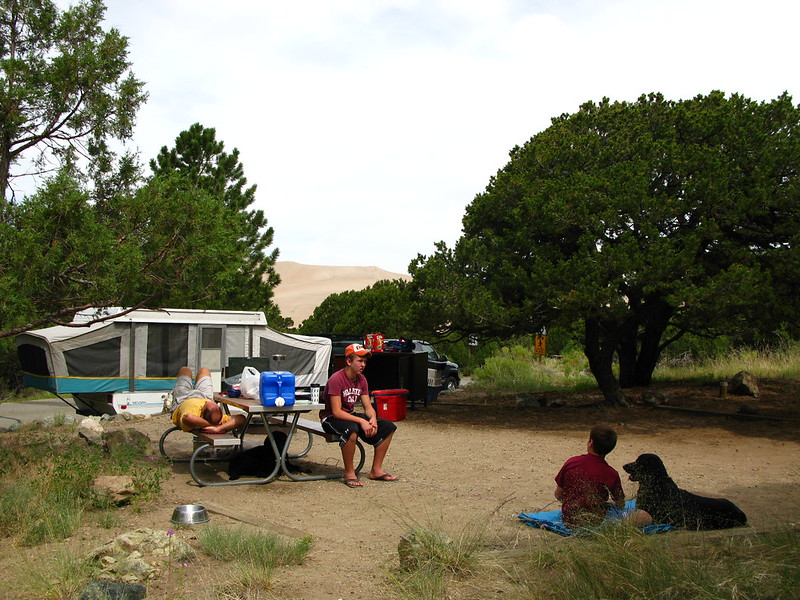
Living Responsibly While Camping
Minimizing Your Environmental Impact
Living responsibly while RV camping goes beyond just setting up camp. Here’s how you can minimize your environmental footprint:
- Waste Management: A core principle of Leave No Trace. Sort your waste into recyclable, compostable (if facilities allow), and landfill-bound items. Pack out all trash, including food scraps and used tissues.
- Reduce, Reuse, Recycle: Plan meals to minimize food waste. Opt for reusable containers and utensils whenever possible. Recycle at designated stations if available at your campsite.
- Leave No Trace: Respect the natural environment. Avoid disturbing wildlife habitats, stay on designated trails, and leave rocks, plants, and historical artifacts undisturbed.
Wildlife Etiquette: Sharing the Outdoors
Wildlife encounters can be magical, but it’s crucial to maintain a safe distance for both you and the animals. Here are some key points:
- Keep a Safe Distance: Admire wildlife from afar and avoid approaching or attempting to feed them.
- Secure Your Food: Store food in airtight containers inside your RV and never leave unattended food scraps outdoors. This will help prevent attracting animals to your campsite.
- Properly Dispose of Food Scrapes: Utilize designated bear-proof bins or dispose of food scraps in a way that discourages wildlife from scavenging.
Campsite Safety and Security
Safety and security are paramount for a relaxing camping experience. Here are some best practices:
- Be Aware of Your Surroundings: Keep an eye on your belongings and valuables. Lock your RV when you leave the campsite.
- Fire Safety: Only use designated fire rings and build campfires responsibly. Always extinguish fires completely before leaving your campsite.
- Weather Awareness: Stay informed about weather forecasts and be prepared for potential changes.
- First-Aid Kit: Pack a well-stocked first-aid kit to address minor injuries.
Fire Safety: Responsible Campfire Enjoyment
Campfires are a quintessential part of the camping experience. However, fire safety is essential to prevent wildfires and protect the natural environment.
- Build Responsibly: Use designated fire rings and keep your campfire a manageable size.
- Never Leave a Fire Unattended: Always have a responsible adult supervising the fire.
- Extinguish Properly: Douse your campfire with water until cool to the touch. Stir the ashes to ensure no embers remain.By following these responsible practices, you’ll ensure a safe and enjoyable camping experience for yourself and your fellow campers, while leaving a minimal impact on the environment
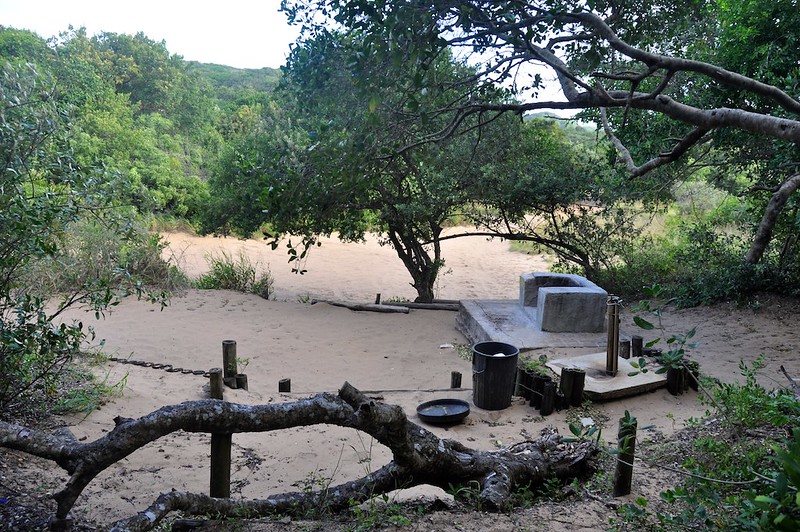
Cleanup and Campsite Restoration
Leaving No Trace Behind: The Final Act
A responsible RV adventurer leaves the campsite as pristine as they found it. Here’s a checklist to ensure a smooth and minimal-impact breakdown:
- Disconnect Utilities: Carefully disconnect and stow away electrical cords, water hoses, and sewer hoses (if applicable).
- Secure Belongings: Pack up all your gear and ensure nothing is left behind. Double-check under furniture and awnings for any forgotten items.
- Dispose of Waste Properly: Pack out all trash, including food scraps, and dispose of it responsibly at designated dumpsters or recycling bins.
Natural Restoration: Erasing Your Footprint
Leaving a truly invisible footprint goes beyond simply removing your belongings. Here are some ways to go the extra mile:
- Scatter Scatter Rugs: If you used a recycled plastic camping mat, loosen and scatter any compacted soil underneath to promote natural regrowth.
- Scatter Fire Ring Debris: If using a designated fire ring, carefully scatter the cooled ashes within the ring to help them decompose naturally. (Note: Always check local regulations regarding fire ring debris disposal).
- Minimize Tire Marks: If possible, try to erase any visible tire marks left on soft ground by gently raking the area with a stick or trowel. (Note: This should only be done if it doesn’t cause further damage to the vegetation).
Post-Trip Reflection and Improvement
The journey doesn’t end when you leave the campsite. Here’s how to make the most of your experience:
- Reflect on Your Practices: Think about what worked well and identify areas for improvement. Did you pack efficiently? Could you have minimized waste further?
- Continual Learning: Research new techniques and tips for responsible RV camping.
Community Engagement: Sharing the Knowledge
The RV community thrives on sharing experiences and knowledge. Here’s how you can contribute:
- Share Your Adventures: Connect with other RV campers online or at campgrounds. Share stories, tips, and responsible camping practices.
- Support Sustainability Initiatives: Look for opportunities to get involved with organizations promoting responsible RV camping and environmental conservation.
By following these final steps, you’ll not only leave your campsite pristine but also contribute to a more sustainable future for RV camping and the natural world we cherish.
Kaibab National Forest, AZ via flickr
Conclusion
The open road beckons, and with this comprehensive guide, you’re now equipped to navigate the world of RV camping responsibly. We’ve emphasized the importance of preparation, from choosing the right campsite to packing eco-friendly gear. Responsibility is at the heart of every step, from minimizing your environmental impact to ensuring campsite safety. Remember, minimal impact is the key to preserving the beauty of nature for generations to come.
Embrace the freedom and flexibility of RV camping, but do so with a commitment to protecting the natural world. By following these principles, you can truly experience the magic of the outdoors while leaving only footprints – and perhaps some inspiration for others to follow suit.
The call to action is twofold:
- Engage with the RV community: Share your responsible camping experiences, tips, and stories online or at campgrounds. Together, we can foster a culture of sustainable RVing.
- Promote responsible camping: Advocate for responsible practices and support organizations dedicated to environmental conservation.
Let’s explore the wonders of our natural world with respect and leave it a little better than we found it. Happy and responsible RV camping!
Appendices
Appendix A: Recommended Eco-Friendly Products
- Expandable Solar Panel Kits (100W – 200W)
- Description: Perfect for powering lights, small appliances, and charging batteries, these kits are essential for off-grid camping. They’re easily expandable, allowing you to increase capacity as needed.
- Environmental Benefit: Reduces reliance on fossil fuels, lowers carbon footprint.
- Where to Buy: Renogy
Water Conservation Tools
- Low-Flow Showerhead
- Description: This showerhead significantly reduces water usage without sacrificing water pressure, making it ideal for conserving water in your RV.
- Environmental Benefit: Saves gallons of water over a single trip, conserving precious natural resources.
- Where to Buy: EcoCamel
Biodegradable Cleaning Supplies
- Plant-Based Dish Soap and Cleaning Wipes
- Description: Made from natural ingredients, these cleaning supplies offer effective cleaning power without the harmful environmental impact of chemical-based products.
- Environmental Benefit: Biodegradable, reducing pollution in waterways.
- Where to Buy: Eco-Me
Recycled Camp Furniture
- Folding Camp Chairs and Table Made from Recycled Plastic
- Description: Durable and stylish, this furniture is perfect for eco-conscious campers looking to minimize their environmental impact.
- Environmental Benefit: Utilizes recycled materials, reducing waste and demand for new plastic production.
- Where to Buy: Trex Outdoor Furniture
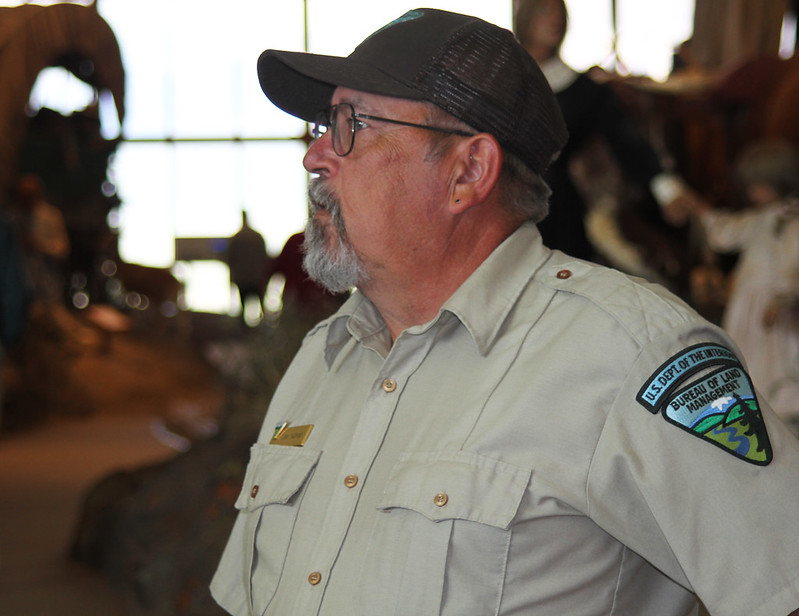
Appendix B: Legal Considerations and Permissions
Focus on User Location
Regulations and permit requirements for boondocking on public lands vary by region. It’s essential to check with the specific land management agency responsible for your chosen location.
Permit Application Resources
- Bureau of Land Management (BLM)
- Website: BLM.gov
- Permit Info: Offers guidelines for land use and necessary permits for boondocking.
- National Forest Service
- Website: USDA Forest Service
- Permit Info: Provides information on camping permits and regulations in national forests.
- Comprehensive Permit Guide
- Website: Recreation.gov
- Overview: A resource for finding and applying for permits across various federal lands.
Appendix C: Resource List
Further Reading
Books
- “The Camper’s Guide to Outdoor Pursuits” by Jack Gordon: Essential reading for those new to RV camping and veterans alike, focusing on sustainable practices.
- “Boondocking: Finding the Perfect Campsite on America’s Public Lands” by Bob Difley: A comprehensive guide to boondocking responsibly in the U.S.
Websites
- Leave No Trace: Offers principles and practices for minimizing impact while enjoying the outdoors.
- RVing Planet: Provides tips, gear recommendations, and guides for RV campers.
Forums & Communities
- RVillage: An online community connecting RVers across the globe. Share experiences, tips, and join groups with similar interests.
- Website: RVillage
Contact Information
Environmental Organizations
- The Nature Conservancy
- Website: nature.org
- Focus: Conservation of natural areas and water resources.
- Sierra Club
- Website: sierraclub.org
- Focus: Advocates for the protection of the environment and wild places.
National & State Camping Associations
- RV Industry Association (RVIA)
- Website: rvia.org
- Focus: Represents RV manufacturers and component suppliers, providing industry standards and educational resources.
- State Camping Associations: Many states have their own camping associations, which can be found through a quick online search or by visiting RVIA for links to state associations.
Featured Image: “RV camping at Kiptopeke State Park – wintertime” by vastateparksstaff is licensed under CC BY 2.0.

